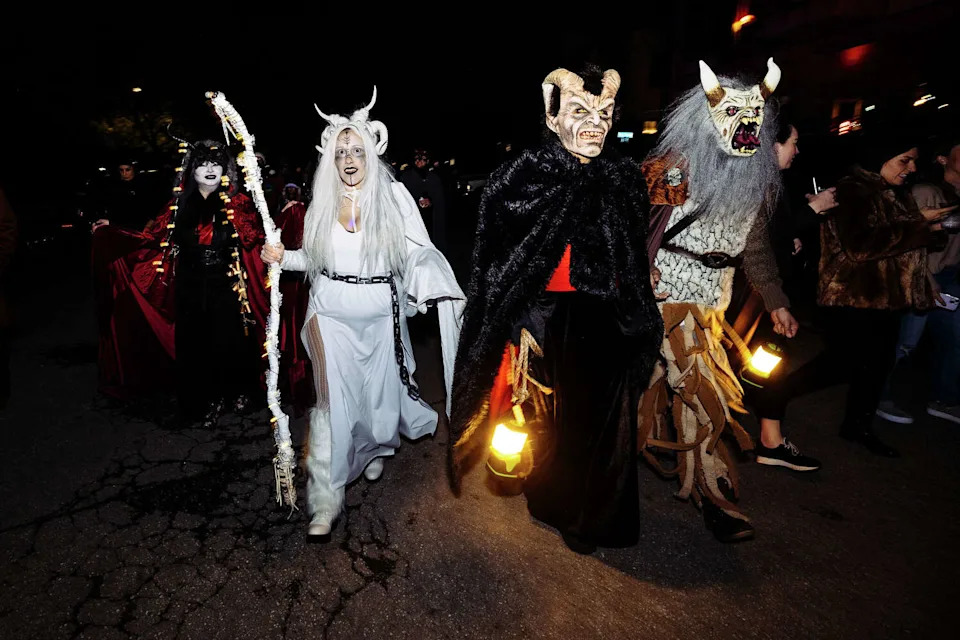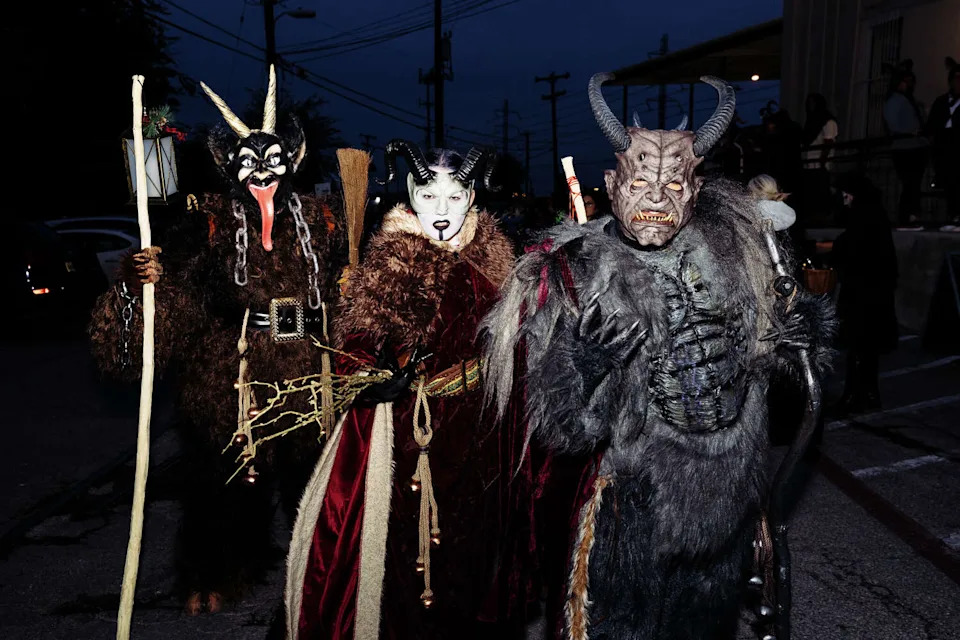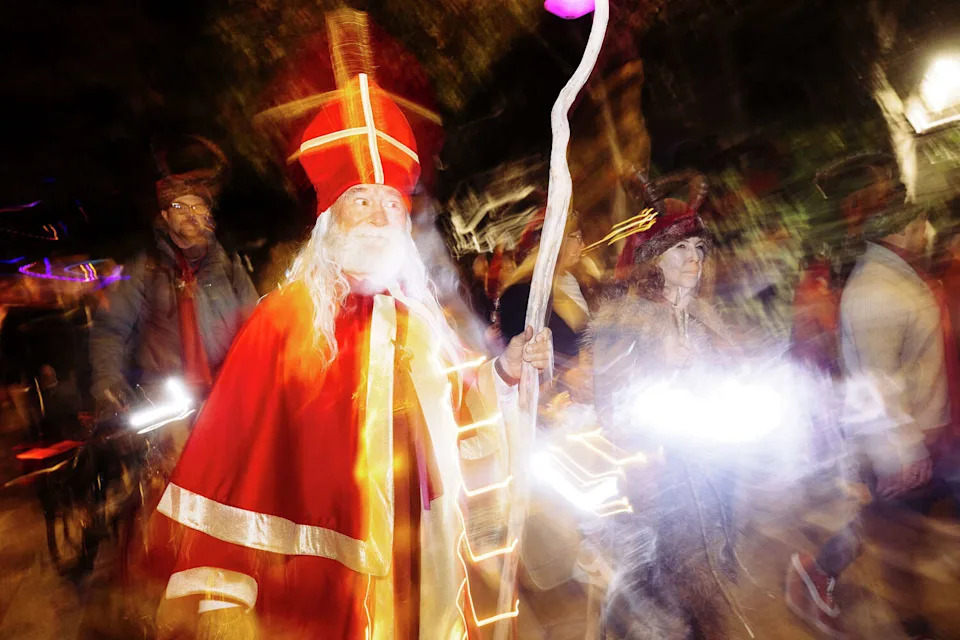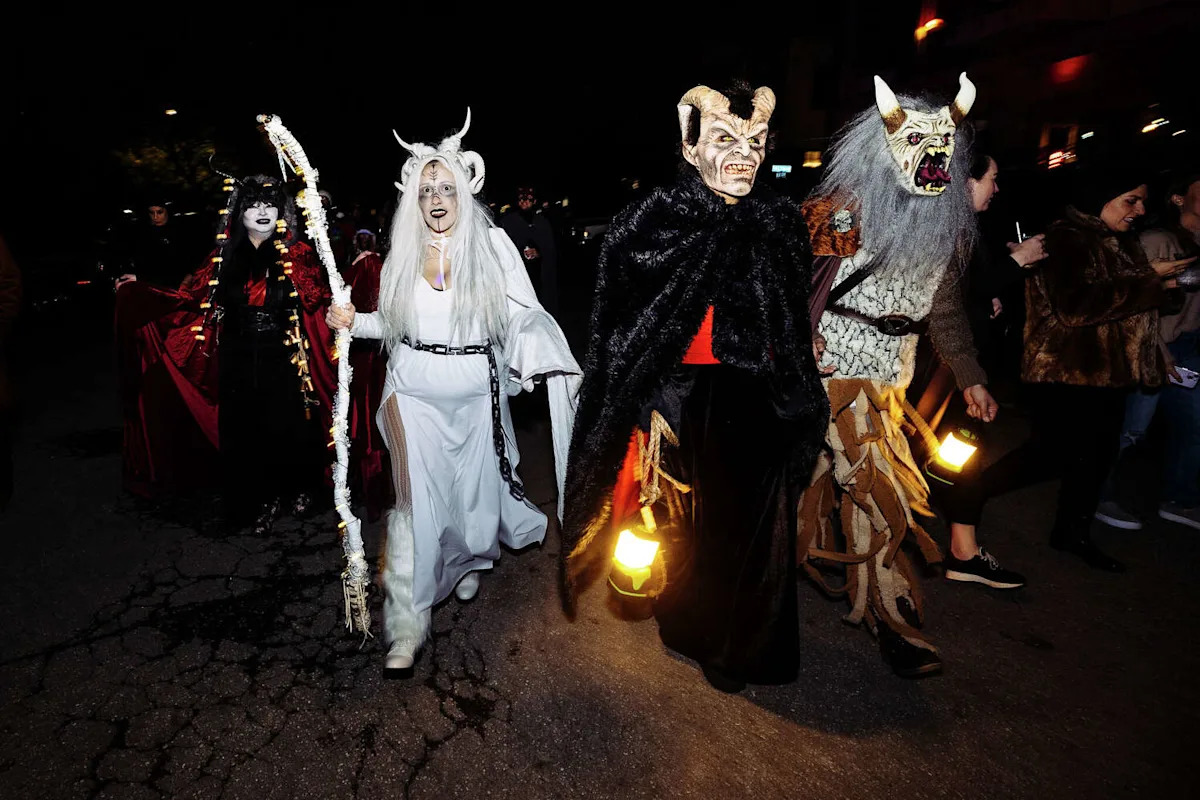The controversial parade celebrating frightening European folklore that took over a historic San Antonio downtown area during the last Christmas season will return again in 2025.
The second annual Krampus Parade will return to the historic King William District in San Antonio on December 5 and begin at 7:30 p.m. Organizers said in the announcement the parade is free and family-friendly, and those who wish to march in the event must register by November 16 on the event’s official website, krampusportal.com.

San Antonio’s inaugural Krampus Parade attracted spectators to Southtown for a spooky Christmas experience on Thursday, December 5. (Chris Stokes for MySA)
“Experience dazzling costumes, glowing lanterns, and a night of mischief, magic, and Gemütlichkeit – that cozy blend of warmth, cheer, and togetherness,” organizers said in the announcement on social media.
Last year, people who did not participate could also spectate the event along the parade route.
San Antonio’s first Krampus Parade drew a wide amount of interest and also pushback when it debuted last year, with local religious leaders speaking out against the event in addition to a number of protestors picketing the parade. The event was so popular that it spawned its own Fiesta event – the Fiesta Masquerade Pachanga.

San Antonio’s inaugural Krampus Parade attracted spectators to Southtown for a spooky Christmas experience on Thursday, December 5. (Chris Stokes for MySA)
What is a Krampus Parade?
The tradition of the Krampus Parade dates back to the Middle Ages as a Krampuslauf, or Krampus run, where people would dress up in his likeness and chase children down the street in a menacing way, threatening to beat them for not behaving, according to Travel + Leisure.
The folklorish figure has been known through history in different cultures but is most often attributed to traditions in Europe’s Austria and Germany. The King William Historic District saw “a great many Germans” settle in the area in the 1840s, according to the City of San Antonio. The neighborhood was named in honor of King Wilhelm I, King of Prussia in the 1870s.

San Antonio’s inaugural Krampus Parade attracted spectators to Southtown for a spooky Christmas experience on Thursday, December 5. (Chris Stokes for MySA)
Devon Donohue-Bergeler, director of the UTSA German Program, said to MySA last year that people need to view the folkloric creature like the Grimm’s fairytale version of Santa’s naughty and nice list, noting the holiday traditions involving Krampus are meant to include his good counterpart, St. Nicholas.
The folklorish figure has been known through history in different cultures but is most often attributed to traditions in Europe’s Austria and Germany. The King William Historic District saw “a great many Germans” settle in the area in the 1840s, according to the City of San Antonio. The neighborhood was named in honor of King Wilhelm I, King of Prussia in the 1870s.
This article originally published at Krampus Parade returns to San Antonio’s most historic German district.

